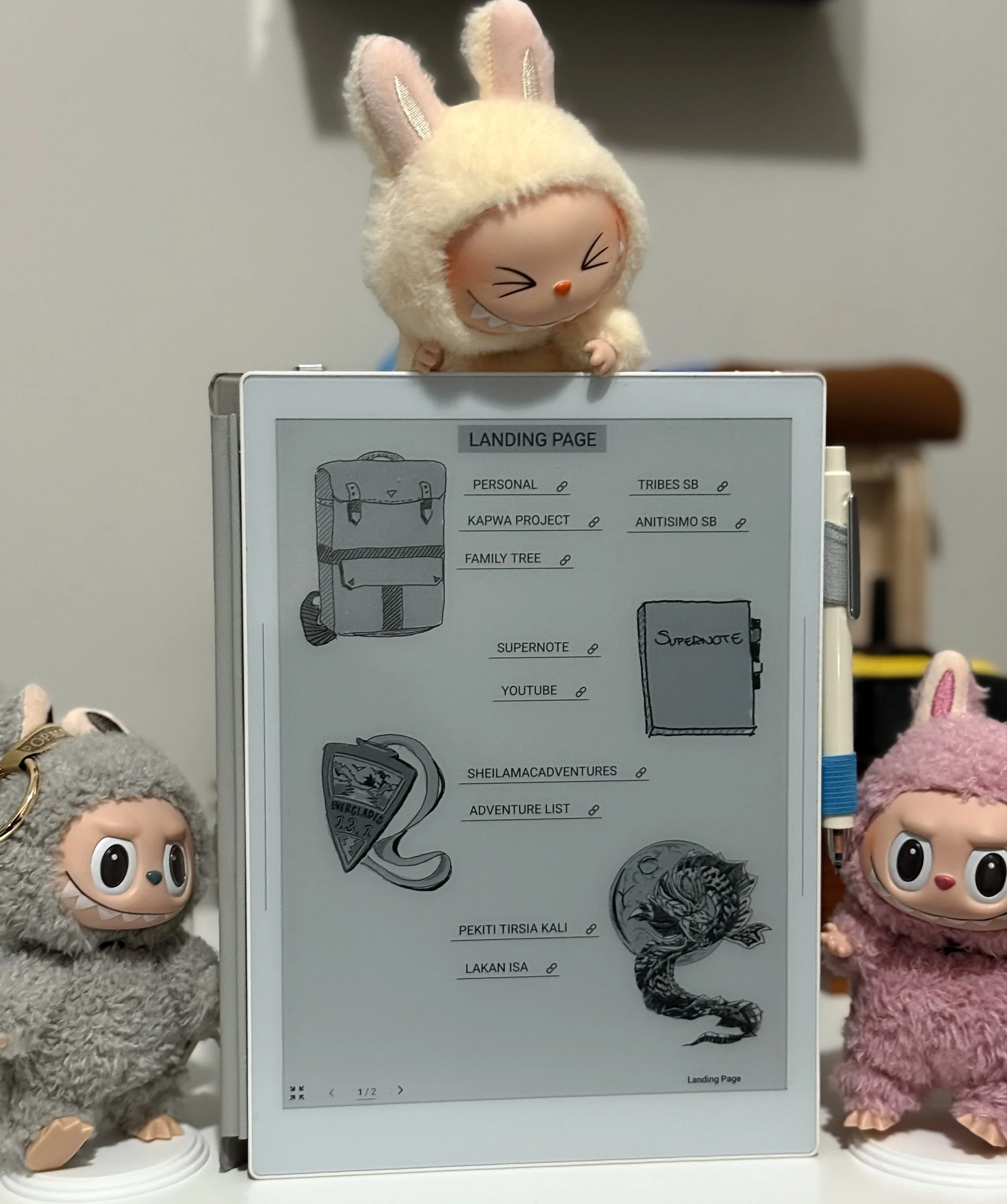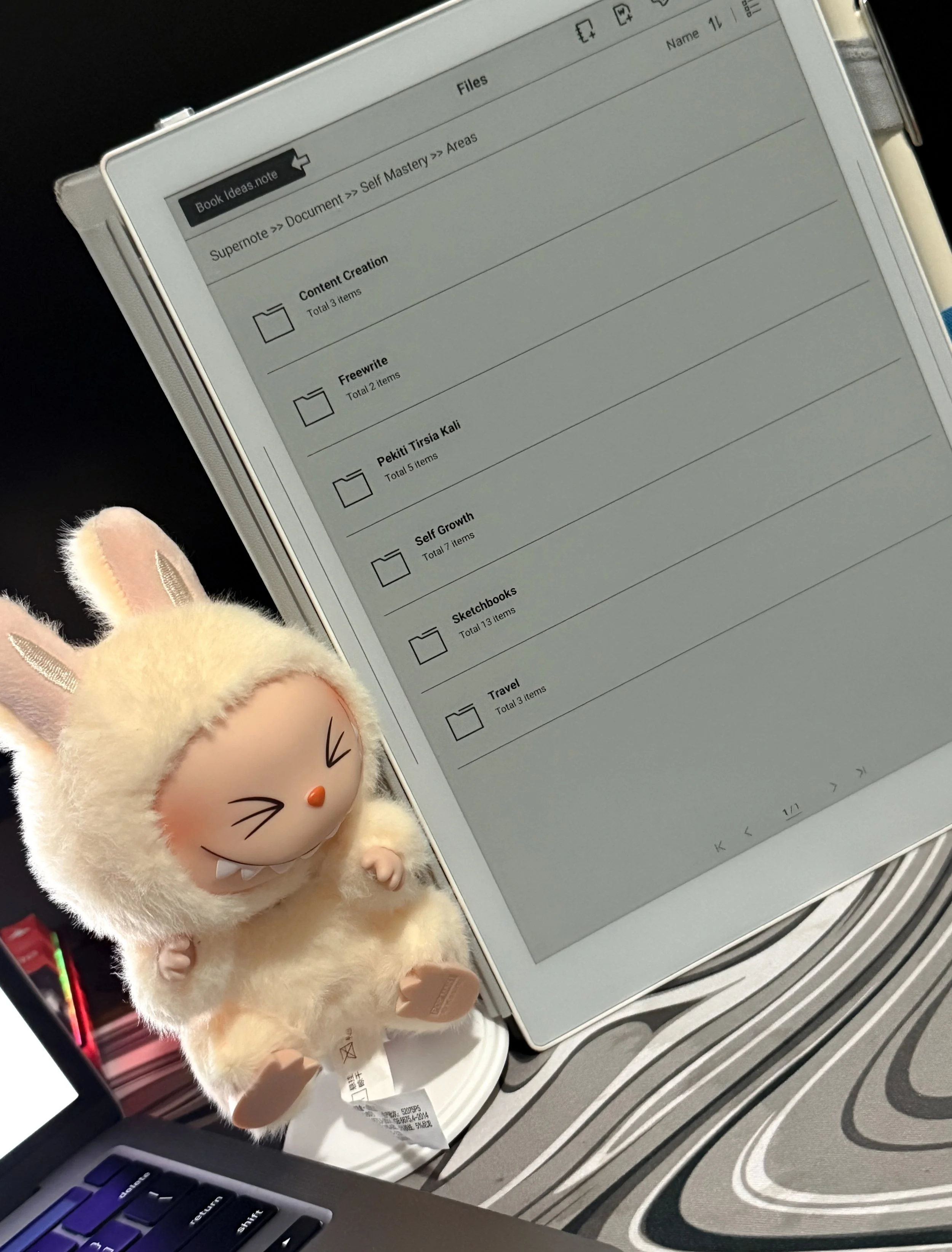Staying organized in a digital workspace can be overwhelming, especially when files start piling up. On most devices, navigating through folders from left to right feels tedious and cluttered. But on my Supernote, I found that using a top-down organization system completely changed the way I manage my files.
Instead of clicking through endless folder layers, I now arrange everything vertically, making my workspace clean, accessible, and efficient. If you’ve ever felt frustrated with digital clutter, I can’t recommend this approach enough—it has been a game-changer for me.
Organizing My Planners on Supernote
When I first started organizing my files top-down instead of left-to-right, everything instantly felt more streamlined. The Supernote’s minimalist design naturally lends itself to a vertical structure, and this approach has helped me stay focused without distractions.
I no longer waste time searching for what I need. Instead, everything is arranged in a way that makes sense at a glance, allowing me to navigate effortlessly through my notes, projects, and planners.
Why Top-Down Just Works on Supernote
A Cleaner, More Organized View
One of the first things I noticed was how much cleaner and structured my Supernote felt after switching to a top-down layout. The e-ink display already makes everything crisp and easy to read, but the vertical structure takes that clarity even further.
Unlike other devices where files are spread across the screen, creating a cluttered mess, my Supernote now presents a simple, structured list. This allows me to focus on one thing at a time instead of being visually overwhelmed by too much information at once.
Navigating Files Feels Effortless
Scrolling through a top-down list on my Supernote feels smooth and natural. I can quickly scan through my folders, notes, or projects without getting lost in unnecessary layers.
Grouping related documents together is now more intuitive, making it easy to access work-related files, personal notes, or creative projects in seconds.
Maximizing Screen Space
The Supernote’s screen size is perfect for a vertical organization style. With a top-down structure, I can:
✔️ Keep my screen clean and uncluttered
✔️ See a focused list without distractions
✔️ Leave room to preview documents or jot down quick notes
Since the Supernote’s display is narrower than traditional tablets, horizontal layouts waste valuable screen space. The top-down approach makes the most of every inch.
Less Overwhelm, More Focus
One of my favorite things about my Supernote is how it helps me stay focused, and a top-down structure enhances that even further.
When I open a folder, I’m not met with a chaotic spread of files. Instead, I see a neatly arranged list—one item under another. It’s easy to process information step by step, without feeling overwhelmed.
There’s no visual clutter, no distractions—just clarity.
Intuitive and Fast Navigation
Scrolling vertically on the Supernote feels effortless. Whether I use the touchscreen or the navigation buttons, everything is quick and responsive.
I can move through folders without wasting time searching, and since I often sync files with other devices, the structure remains consistent and easy to manage across all my platforms.
It Grows With My Workflow
As my notes and projects expand, my top-down organization system scales effortlessly.
✔️ I can add subfolders without losing track of anything
✔️ Reorganizing files takes seconds
✔️ It adapts easily to my evolving workflow—whether I’m working, brainstorming, or planning trips
Since I’m constantly juggling work, creative ideas, and travel plans, this system makes it easy to keep everything in order without stress.
A Supernote Workflow That Works for Me
Switching to a top-down organization system has completely changed how I use my Supernote. My files are now structured, easy to navigate, and perfectly aligned with the Supernote’s minimalist design.
If you’re looking for a way to simplify your workflow, eliminate digital clutter, and make navigating files effortless, I highly recommend giving this approach a try. It’s simple, incredibly effective, and makes the Supernote even more enjoyable to use.


